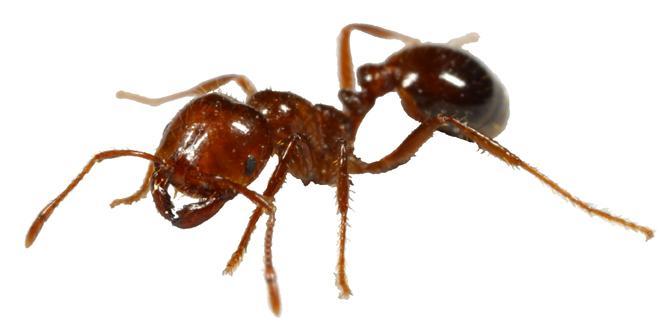Fire Ants – Beware!!!
 As we leave the Southern Region behind, I have to say overall our time in the south has been good. The folks have been friendly and hospitable, even if the weather hasn’t been Chamber of Commerce. Yep, for the most part we enjoyed our time in Kentucky, Tennessee, Alabama, Mississippi, and Texas. However, one thing Fred and I did not enjoy and will not miss about the south are the fire ants common in Alabama, Mississippi, and Texas campgrounds.
As we leave the Southern Region behind, I have to say overall our time in the south has been good. The folks have been friendly and hospitable, even if the weather hasn’t been Chamber of Commerce. Yep, for the most part we enjoyed our time in Kentucky, Tennessee, Alabama, Mississippi, and Texas. However, one thing Fred and I did not enjoy and will not miss about the south are the fire ants common in Alabama, Mississippi, and Texas campgrounds.
It seems the fire ant was accidentally introduced into the United States by a South American cargo ship coming to an Alabama port in 1918, and now infests the majority of the Southern and Southwestern United States.
A typical fire ant colony produces mounds in open areas, and feeds mostly on young plants, seeds, and sometimes crickets. Fire ants will attack small animals and can kill them. Unlike many other ants, which bite and then spray acid on the wound, fire ants only bite to get a grip and then sting (from the abdomen) and inject a toxic alkaloid venom. For humans, this is a painful sting with a sensation similar to what one feels when burned by fire—hence the name—and the aftereffects of the sting can be deadly to sensitive individuals.
 Fire ants nest in the soil, often near moist areas, such as river banks, pond edges, watered lawns and highway edges. With the wet weather we “enjoyed,” the fire ants were happy to build their mounds all over the place. We were told these mounds can reach heights of more than a foot but, fortunately, most were six inches or less.
Fire ants nest in the soil, often near moist areas, such as river banks, pond edges, watered lawns and highway edges. With the wet weather we “enjoyed,” the fire ants were happy to build their mounds all over the place. We were told these mounds can reach heights of more than a foot but, fortunately, most were six inches or less.
Colonies are founded by small groups of queens or single queens. Even if only one queen survives, within a month or so the colony can expand to thousands of individuals.
In the US, the FDA estimates that more than US$5 billion is spent annually on medical treatment, damage, and control in red ant-infested areas. These ants cause approximately $750 million in damage annually to agricultural assets, including veterinarian bills and livestock loss as well as crop loss.
The venom of a fire ant sting causes stinging and swells into a bump. This can cause much pain and irritation at times, especially when stung repeatedly by several at once. The bump often forms into a white pustule, which is at risk of becoming infected if scratched. However, if left alone, it will usually go down within a few days. The pustules are unattractive and uncomfortable while active, as Fred’s leg will attest. And, some people, like myself, are allergic to the venom. An antihistamine or topical corticosteroids helped to reduce our itching.
First aid for fire ant bites includes external treatments and oral medicines.
External treatments are a topical steroid cream (hydrocortisone), or one containing aloe vera. I’m told, regular toothpaste can be a quick and simple relief. Also, a simple solution of half bleach and half water applied immediately to the area can reduce the pain, itching and, perhaps, pustule formation. But check with a doctor or PA before trying either of these “home remedies.”
Oral medicines are antihistamines. Over-the-counter worked well for me.
If you experience severe or life threatening allergic reactions to fire ant insect stings, see a doctor or hospital immediately. The more severe reactions include severe chest pain, nausea, severe sweating, loss of breath, serious swelling, or slurred speech.


